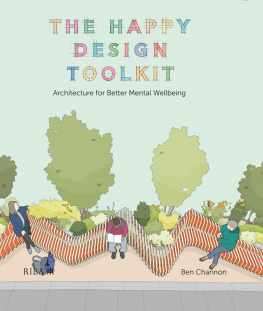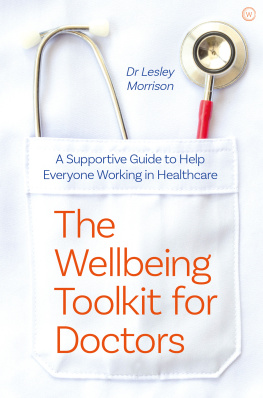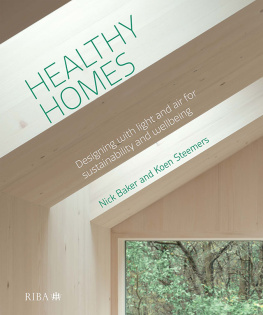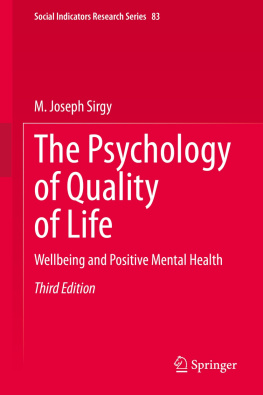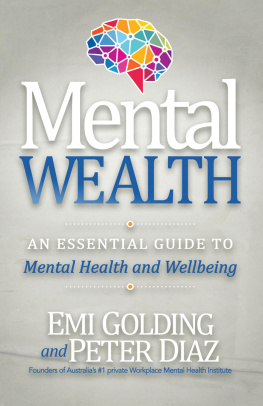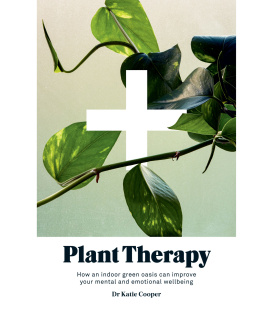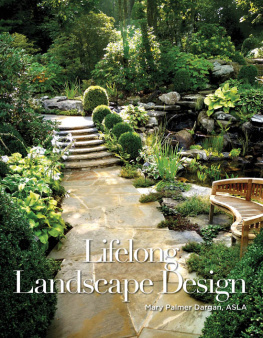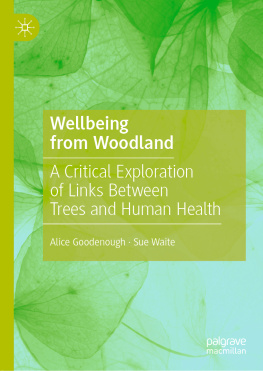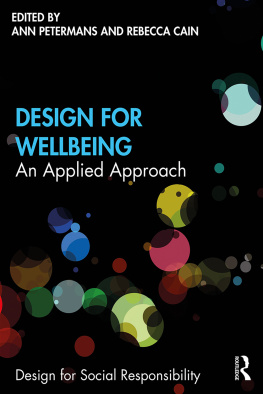
T H E H A P P Y D E S I G N T O O L K I T
Architecture for Better Mental Wellbeing

BEN CHANNON
RIBA Publishing 2022
Published by RIBA Publishing, 66 Portland Place, London, W1B 1AD
ISBN 978 1 85946 986 6
The right of Ben Channon to be identified as the Author of this Work has been asserted in accordance with the Copyright, Designs and Patents Act 1988 sections 77 and 78.
All rights reserved. No part of this publication may be reproduced, stored in a retrieval system, or transmitted, in any form or by any means, electronic, mechanical, photocopying, recording or otherwise, without prior permission of the copyright owner.
British Library Cataloguing-in-Publication Data A catalogue record for this book is available from the British Library.
Commissioning Editor: Ginny Mills Assistant Editor: Scarlet Furness Production: Sarah-Louise Deazley Designed and typeset by Mercer Design, London Printed and bound by Short Run Press, Exeter Cover illustration: Ben Channon
While every effort has been made to check the accuracy and quality of the information given in this publication, neither the Author nor the Publisher accept any responsibility for the subsequent use of this information, for any errors or omissions that it may contain, or for any misunderstandings arising from it.
www.ribapublishing.com
DOI: 10.4324/9781003277897
Contents
Image Credits
Guide
Acknowledgements
There are several people Without whom this hook wouldn't have happened, and I'd life to take the opportunity here to: thank them.
First, thank you to my old colleagues at Assael Architecture for supporting me on my quest to better understand what makes buildings truly healthy, for giving me opportunities to explore and research this topic and for championing my work for many years.
Thanks also to the amazing team at Ekkist for helping me to take my understanding of designing healthy buildings even further, for their ongoing support, and their continual enthusiasm around this subject.
Thank you to my family for pushing me on the good days and being there on the bad ones - I'm very lucky to have you and very proud of every one of you.
Biggest thanks of all to my incredible wife, Alex, for putting up with all the weekends I've spent at my laptop and for getting through a year of lockdown Kill me in our tiny flat. Let's hope for all our sates we never have to do that again.
About the author
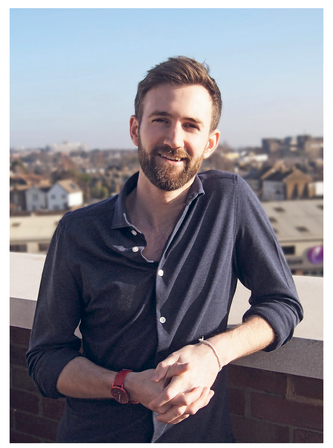
Ben Channon is an architect who has specialised in designing healthy buildings. He is a director at the design for-wellbeing consultancy Ekkist, where he advises client and design teams on how to create healthier places, and researches how buildings and urban design can have an impact on how we feel.
He developed an interest in design for mental health, wellbeing and happiness after suffering with anxiety problems in his mid-twenties. This led him to research the relationship between buildings and happiness, which formed the basis of his first book. Happy by Design: A Guide to Architecture and Mental Wellbeing. Ben now speaks on this subject to businesses and universities around the world.
Ben became a WELL Accredited Professional in 2019, broadening his knowledge to encompass design for physical wellbeing. He now sits on the WELL Mind Advisory panel, using his expertise to: raise the bar for healthy buildings worldwide.
In 2017, Ben co-founded the Architects' Mental Wellbeing Forum, which is-focused on improving mental health within the industry. He is also an accredited mindfulness practitioner with the Mindfulness Association and is interested in how buildings can help us to- be more mindful and present every day.
Introduction
DOI: 10.4324/9781003277897-1
'Architecture is an act of optimism.'
- NICOLAI OUROUSSOFF, ARCHITECTURE CRITIC
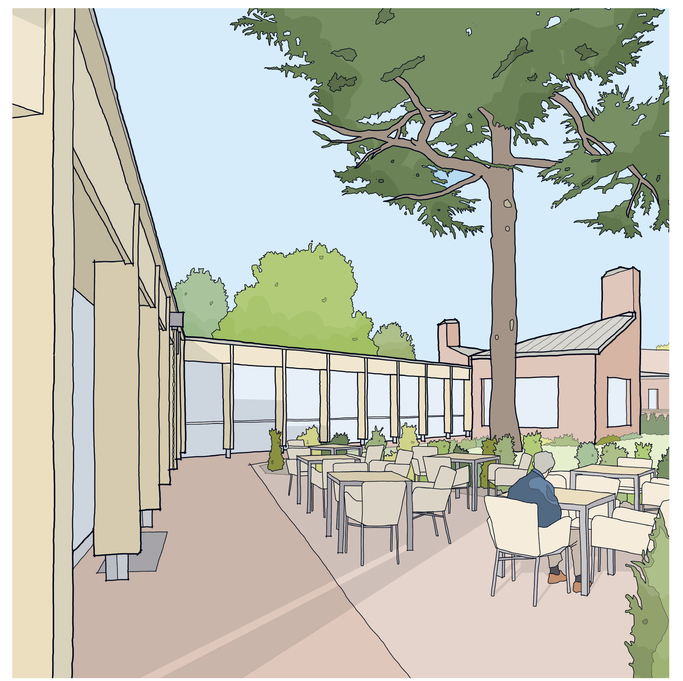
Figure 0.0: John Morden Centre, London, UK, by Mae
Growing' up, I didn't think much about mental health. While I certainly had my ups and downs, it wasn't something which I ever really thought I would need to give much attention. However, this all changed in my mid-twenties.
I was working at a large architecture practice and putting in long hours to try to impress those above me with my work ethic. Like many people at that age, I had the sense that in some ways I was almost indestructible. I soon discovered, though, that doing 70-hour weeks interspersed with nights out at the weekends was not as sustainable as I had first thought.
My problems initially took the form of physical health issues coughs or colds that wouldn't budge, for example. After numerous trips to the doctor, my GP suspected something else was going on and asked me about my mental health.
It quickly became clear that I wasn't as indestructible as I had believed, and that ta all extents and purposes I had completely burned myself out. Without realising it, I had become a very anxious person and my mental resilience to dealing with problems had almost completely disappeared. Fortunately, I was able to access some support in the form of CBT sessions, and I began meditating on a daily basis - something that I try to maintain today. I also reassessed my working habits and began to cultivate a philosophy of working smart and focusing on output rather than hours-at the desk.
As a result of these lifestyle changes, I am pleased to say I made a return to full health, but as I continued designing homes for people every day, I began to think about the ways in which the buildings I was designing were affecting people psychologically. I became acutely awake that in spite of going to an excellent architecture school, the implications of architectural design on mental wellbeing were something we were never taught.
I started to research the subject and discovered there was a vast wealth of knowledge and research being generated by a fascinating group of people called 'environmental psychologists' about the ways in which space affects how we think and feel. However, for some reason this knowledge wasn't always making its way to the people Who design spices, meaning that much of this valuable research never had the opportunity to inform the buildings that people use every day. This prompted me to write my first book. Happy by Design: A Guide to Architecture and Mental Wellbeing.
Happy by Design Was an exploration of the ways in which buildings can have an impact on how We feel, for better or for worse, and through the book I hoped to provide a conceptual overview of the subject. Since this book was published, the same questions kept cropping up after I gave lectures or talks: 'How can we bring this knowledge into our buildings?' and 'What does it look like?' This book seeks to answer exactly those questions.
In a way, this book Can be considered a big brother Or sister to Happy by Design. While that book can be seen more as a conceptual overview of the relationship between our environment and our mental Wellbeing, this is more of a practical guide or a set of tools to help people integrate those concepts and philosophies into real-life projects.
Next page
